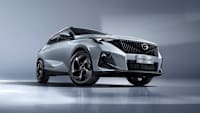Tesla’s new Model 3 is arriving in Australia soon, and while it might look like a mild facelift from a distance it’s actually a significantly different and deeply updated car.
In fact, it only has roughly 50 per cent parts commonality with the outgoing version, and has had significant tweaks inside, outside, and underneath to keep it in the game against an increasingly competitive list of rivals.
So what are the main changes? Check out our list below
New suspension
While the brand is largely incognito outside of communications made by its leader, Elon Musk, this isn’t to say its engineers aren’t aware of the flaws with the current Model 3 and how rapidly its competition is catching up.
One of the biggest criticisms from both media and customers, is the original Model 3’s ride quality and the amount of road and wind noise that enters the cabin.
Part of addressing this issue is a completely revised suspension. There are new mounting points where the suspension meets the body, a completely revised set of bushings, new front knuckles, frequency-dependent valve damping, and better body baffling to reduce noise.
New tyres
Also addressing this issue is a new set of Michelin tyres designed specifically for the Model 3. The new tyres use a different compound which slightly reduces the car’s top-speed but increases the ride quality and lowers rolling resistance to increase efficiency. The 0-100km/h sprint times remain the same for the two launch models, the Rear Wheel Drive and Long Range.
.jpg)
Tweaked sound insulation
Continuing on the theme of improving refinement, Tesla has redesigned many pieces of the car to increase sound deadening. For example, the bonnet edge has been re-profiled to reduce buffeting, and the plastic cowl under the bonnet where it meets the windscreen has also been redesigned. Glass panels used in the car are now all acoustic, and there has been a big increase in carpeted materials, for example, there are now carpet finishes at the back of the boot and behind the rear seat headrests to replace hard plastics that were there before.
Increased interior quality and comfort
Tesla has also increased the premium feel of the cabin to better compete with its rivals, wrapping more surfaces, for example, the cladding on the back of the front seats, in soft materials. The seats have also been redesigned, with the front seats now featuring perforated synthetic leather trim and the rear seat benches having been tweaked for better comfort, as well as being perforated for better ventilation. Elsewhere, Tesla has included new cloth trims in the door cards, and a new soft-trimmed piece across the dash, reducing the amount of hard plastics that were present before.
.jpg)
New interior features
The large screen has been tweaked to have a smaller bezel, and there’s a new steering wheel with indicator buttons, removing the stalks. The front seats, as mentioned earlier, now have perforation, but also ventilation as well as heating, the rear seat now gets its own small screen with its own climate zone, and touch-controllable vents, as well as the ability to stream media for rear passengers. Tesla’s own in-house speaker system has also been upgraded, now made up of 17 rather than 14 speakers with more distinct left and right sound zones, and improved bass. One of the more visible upgrades is the ambient lighting system that works its way around the dash and into the doors. It is a customisable RGB setup, allowing drivers to better customise the interior.
Improved range, lower drag
A major part of the Model 3’s redesign has been to lower its drag coefficient further. Now trimmed all the way down to 0.219Cd, thanks to its redesigned face which is more functional than aesthetic, a re-profiled trailing edge to the bonnet, a new rear diffuser, and new tyres help to boost range by five to 10 per cent. The official WLTP number for the 2024 Model 3 Rear Wheel Drive reaches an impressive 513km, which is up from 491km on the previous version. Meanwhile, the new Long Range can travel 629km on the same WLTP standard.
.jpg)
Even more tech stuff!
With the ‘stalkless’ steering column, the drive modes have been shifted to the touchscreen, and the indicators have been shifted to buttons on the steering wheel. The car’s antenna array has also been upgraded, now said to offer 30 per cent more range, and 50 per cent better signal quality than before. Its 5ghz range has been doubled, and the mics in the cabin have been moved and upgraded so the car picks up the driver and passengers better when you’re on the phone. There’s also now ultra wideband connectivity, which is said to offer 10x the positioning accuracy of bluetooth, allowing the car to more accurately know where you’re standing when you approach it.
Upgraded safety
The new Model 3 features redesigned doors with better side-impact protection in response to upgraded requirements in the American market. The front of the cabin now also features a far side airbag, and the infrared internal camera has been upgraded to allow future software features to be able to check for rear occupants. It is unclear whether the car has been so deeply upgraded that it will need to be re-tested by ANCAP, but it’s something we’ll be keeping an eye on.
.jpg)
Price
The price is already out there, but we’ll put it here again to remind you. The upgraded Model 3 will arrive in customer hands in early 2024, and initially arrives in two variants. The base Rear Wheel Drive now costs from $61,900 before on-roads and state-based incentives, while the Long Range costs from $71,900.
The Performance model that once topped the range is also set to return, but it will come at a later date.
.jpg)






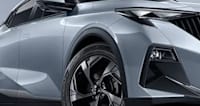

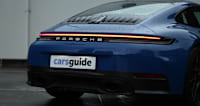


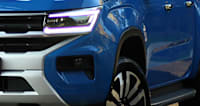



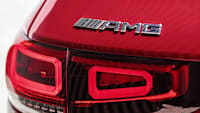
.jpg)

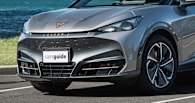





.jpg)
.jpg)
